- Clone
- 34-2-12 (See other available formats)
- Regulatory Status
- RUO
- Other Names
- MHC class I
- Isotype
- Mouse (C3H/HeJ) IgG2a, κ
- Ave. Rating
- Submit a Review
- Product Citations
- publications
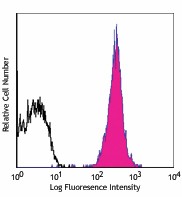
-

BALB/c mouse splenocytes stained with 34-2-12 Alexa Fluor® 647
| Cat # | Size | Price | Quantity Check Availability | Save | ||
|---|---|---|---|---|---|---|
| 110612 | 100 µg | $229 | ||||
The 34-2-12 antibody recognizes α3 domain of H-2Dd MHC class I alloantigen expressed on nucleated cells from mice of the H-2Dd haplotype. H-2Dd is involved in antigen presentation to T cells expressing CD3/TCR and CD8 proteins. The 34-2-12 antibody cross-reacts with cells from the C3H.LG/Ckc strain. Reactivity with other haplotypes (e.g., b,f,k,p,q,r,s) has not been reported. Clone 34-2-12 recognizes the α3 domain of Dd.
Product DetailsProduct Details
- Verified Reactivity
- Mouse
- Antibody Type
- Monoclonal
- Host Species
- Mouse
- Immunogen
- (C57BL/6 x DBA/2)F1 mouse splenocytes
- Formulation
- Phosphate-buffered solution, pH 7.2, containing 0.09% sodium azide.
- Preparation
- The antibody was purified by affinity chromatography and conjugated with Alexa Fluor® 647 under optimal conditions.
- Concentration
- 0.5 mg/ml
- Storage & Handling
- The antibody solution should be stored undiluted between 2°C and 8°C, and protected from prolonged exposure to light. Do not freeze.
- Application
-
FC - Quality tested
- Recommended Usage
-
Each lot of this antibody is quality control tested by immunofluorescent staining with flow cytometric analysis. For flow cytometric staining, the suggested use of this reagent is ≤ 0.25 µg per million cells in 100 µl volume. It is recommended that the reagent be titrated for optimal performance for each application.
* Alexa Fluor® 647 has a maximum emission of 668 nm when it is excited at 633 nm / 635 nm.
Alexa Fluor® and Pacific Blue™ are trademarks of Life Technologies Corporation.
View full statement regarding label licenses - Excitation Laser
-
Red Laser (633 nm)
- Application Notes
-
Additional reported applications (for the relevant formats) include: complement-dependent cytotoxicity1, immunoprecipitation2,3, blocking of cell adhesion4,5, and immunohistochemical staining of acetone-fixed frozen sections6.
This clone does not cross react with other haplotypes (e.g., b, f, k, p, q, r, s). -
Application References
(PubMed link indicates BioLegend citation) -
- Ozato K, et al. 1982. Transplantation 34:113.
- McCluskey J, et al. 1985. Cell 40:247.
- McCluskey J, et al. 1986. J. Immunol. 136:1472.
- Kane KP. 1994. J. Exp. Med. 179:1011.
- Daniels BF, et al. 1994. J. Exp. Med. 180:687.
- Nikolic B, et al. 1999. J. Immunol. 162:3402.
- Ma XT, et al. 2006. Cancer Research 66:1169.
- Matsumoto N, et al. 1998. Immunity 8:245.
- Product Citations
-
- RRID
-
AB_492913 (BioLegend Cat. No. 110612)
Antigen Details
- Structure
- MHC class I
- Distribution
-
Nucleated cells of the H-2Dd haplotype
- Function
- Antigen presentation
- Ligand/Receptor
- CD3/TCR, CD8
- Biology Area
- Immunology, Innate Immunity
- Molecular Family
- MHC Antigens
- Antigen References
-
1. Watts C. 1997. Ann. Rev. Immunol. 15:821.
2. Pamer E, et al. 1998. Ann. Rev. Immunol. 16:323.
3. York I, et al. 1996. Ann. Rev. Immunol. 14:369. - Gene ID
- 14964 View all products for this Gene ID
- UniProt
- View information about H-2Dd on UniProt.org
Related Pages & Pathways
Pages
Related FAQs
Other Formats
View All H-2Dd Reagents Request Custom Conjugation| Description | Clone | Applications |
|---|---|---|
| Biotin anti-mouse H-2Dd | 34-2-12 | FC |
| FITC anti-mouse H-2Dd | 34-2-12 | FC |
| PE anti-mouse H-2Dd | 34-2-12 | FC |
| Purified anti-mouse H-2Dd | 34-2-12 | FC,IHC-F |
| Alexa Fluor® 647 anti-mouse H-2Dd | 34-2-12 | FC |
Customers Also Purchased
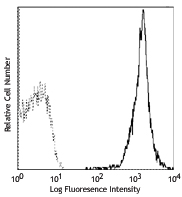
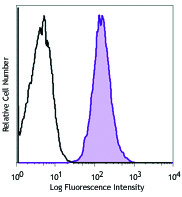
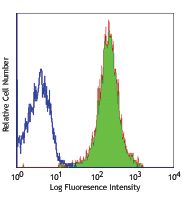
Compare Data Across All Formats
This data display is provided for general comparisons between formats.
Your actual data may vary due to variations in samples, target cells, instruments and their settings, staining conditions, and other factors.
If you need assistance with selecting the best format contact our expert technical support team.
-
Biotin anti-mouse H-2Dd
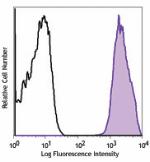
BALB/c mouse splenocytes were stained with biotinylated H-2D... 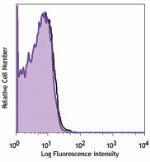
C57BL/6 mouse splenocytes were stained with biotinylated H-2... -
FITC anti-mouse H-2Dd
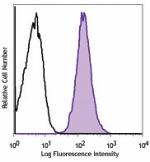
BALB/c mouse splenocytes were stained with H-2Dd ... 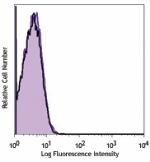
C57BL/6 mouse splenocytes were stained with H-2Dd... -
PE anti-mouse H-2Dd
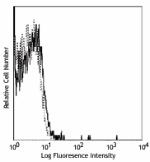
C57BL/6 mouse splenocytes were stained with H-2Dd (clone 34-... 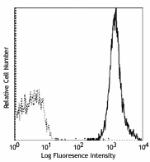
BALB/c mouse splenocytes were stained with H-2Dd (clone 34-2... -
Purified anti-mouse H-2Dd
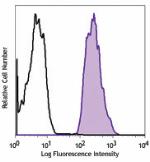
BALB/c mouse splenocytes were stained with purified H-2D 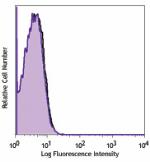
C57BL/6 mouse splenocytes were stained with purified H-2D -
Alexa Fluor® 647 anti-mouse H-2Dd
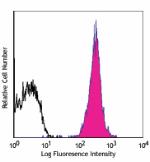
BALB/c mouse splenocytes stained with 34-2-12 Alexa Fluor® 6...
 Login/Register
Login/Register 









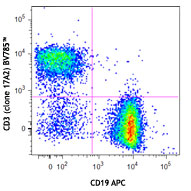



Follow Us